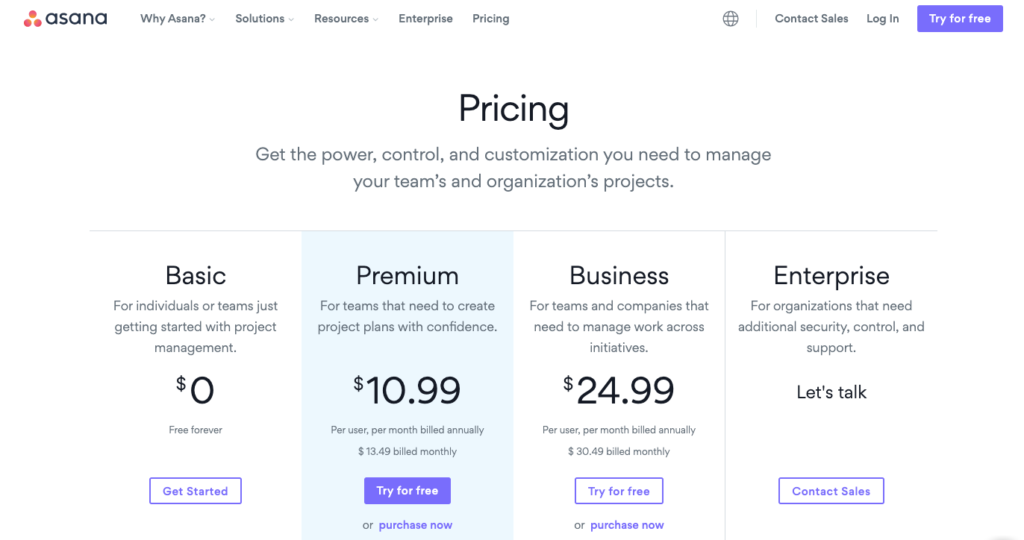

Asana pricing denova software#
Asana offers more than 200+ app integrations, including software like Looker, BetterCloud, and Whimsical. Integrations extend the functionality of Asana by connecting to other tools in a team’s tech stack. “It’s difficult to accurately report on projects without a due date, so I think it would be beneficial for them to implement a metric system for regularly tracking updates.” Asana integrations
Asana pricing denova pdf#
For basic reporting capabilities, free plan users can export CSV and PDF files.Team Lead Rebecca B, who is an Enterprise customer, shares her experience with reporting in Asana: Additionally, some chart axis settings, such as the ability to group tasks by time period, are only available on Business and Enterprise plans. Asana offers Universal Reporting so users can collate the metrics they care about in a centralized dashboard view, but this is only open to Premium, Business, and Enterprise customers. Project managers need insight into project progress, team performance, and productivity to keep their work on track. Each task is dependent on another team member completing the previous task. For example, a content marketing team might create a task for each article they want to publish, and subtasks for writing, editing, graphics, and publishing stages of the workflow. Dependencies are the relationships between tasks which mark the order to complete them.

Task dependenciesĪsana offers task dependencies for Premium customer teams who require collaborative workflows. The horizontal timeline allows you to schedule tasks with clear start and end dates, so you can see what project deadlines are coming up in the weeks or month ahead. Asana’s Timeline viewĪsana’s Timeline view is available for Premium plan users. In this automation sequence, the trigger is the user checking a completion box, and the action is Asana sending you an email notification. For example, you might set up an automation that tells you when someone has completed their project stage, prompting you to review their work. Users can set up custom rules, triggers, and actions in Asana to automate workflows. Asana project management featuresĪsana offers a range of features for individuals and teams of all sizes. By doing so, they break down larger projects into more manageable chunks and assign them to individual team members accountable for the work. Users create tasks and subtasks to represent pieces of work or action items within a project.

At its core, Asana revolves around the concept of tasks. It doesn't replace other methods of communication for critical tasks and project communications, which can be disappointing to some people based on the marketing.Asana is a cloud-based project management platform that individuals, teams, and entire organizations use to track and manage their work. It is clear for people who think like this but the design isn't really intuitive otherwise. It is more difficult than many realize to train people to use this who don't think like the system is setup. The projects don't have the kind of visibility that they claim. The templates are easy to customize including the workflows. I love the interface as I'm not inclined to use something that looks unappealing. Overall, I like the project, but think it should be implemented with these understandings as well as a robust training plan. It may simplify some redundant communications if those redundancies are because of needing to communicate in multiple channels about non-urgent items, but urgent and critical information still needs to be communicated thoroughly so it is not overlooked. It also doesn't necessarily reduce communications. But the claims that it will make everything faster are not true. I think this can be an effective project management tool, if project managers and team members are given enough time to input information and stay up-to-date.


 0 kommentar(er)
0 kommentar(er)
